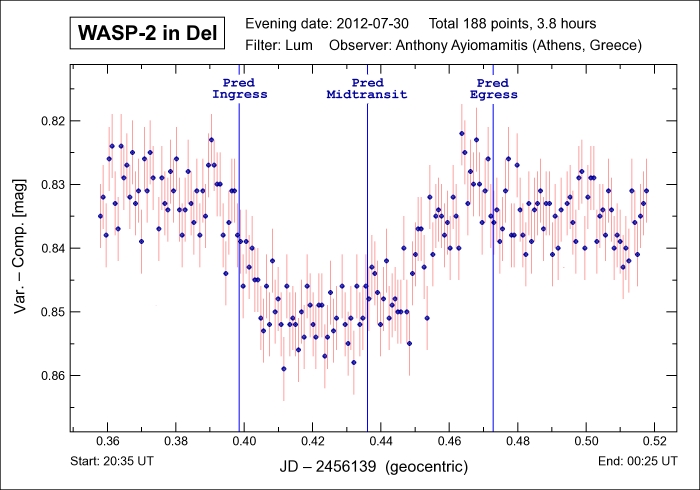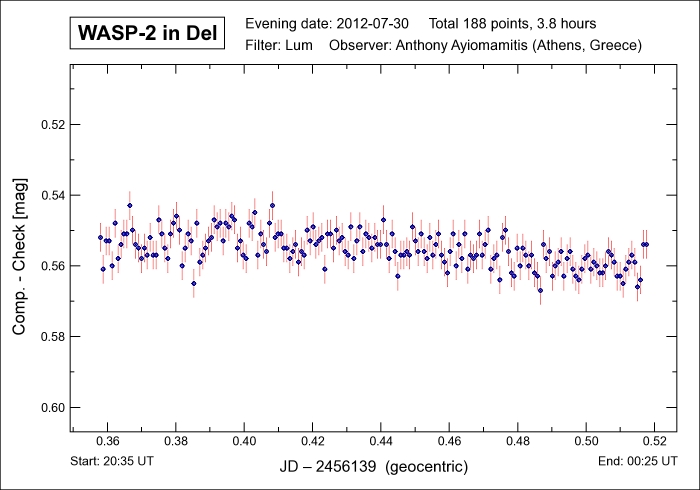
A popular method for the study of variable stars, particularly short-term variables, is by the use of the technique known as "differential
photometry". Rather than measure the (variable) magnitude of a variable star on an absolute scale, measurements are made over time relative
to one or more non-variable star(s) and these differences are then plotted so as to study and illustrate the relative or differential change
in magnitude. Due to the very large number of variables stars, the field of differential photometry represents one of the key fields in
astronomy whereby the amateur astronomer can make a meaningful and long-lasting contribution to both science and astronomy.
More recently, the search for extrasolar planets (over 750 discovered so far) has identified yet another interesting application for the
practice of differential photometry whereby the minute drops in magnitude of a star hosting an exoplanet are studied. Further details for the
interested party are available here.
Note: The light curve for exoplanet WASP-2b in Delphinus depicted below is one of the latest transitting exoplanets,
having being announced in the fall of 2006, and which represents the second discovery of the WASP (Wide Angle Search for Planets) team. It is
characterized with a mass 0.88 that of Jupiter and virtually the same size with a radius equivalent to 1.04 Jupiter radii and with a very brief
orbital period of only 51.6 hours. WASP-2b requires only 108 minutes to transit its parent star at a depth of 1.90%. The parent star, GSC
522:1199, is estimated to have a mass of 0.79 solar masses, a radius equivalent to 0.78 solar radii, a temperature of 5,200° K and to lie at a
distance of 493 light-years away with a visual magnitude of 11.98. The mass and size observed for WASP-2b in combination with its proximity
to its hot parent star make WASP-2b a very typical example of a hot Jupiter.
Further details regarding WASP-2 and WASP-2b are available in the paper published by the discovery team led by Collier Cameron et al (click
here).
Note: The C- and K-stars used for the purposes of the differential photometry measurements depicted below were
GSC 509:1844 (mag 11.03) and GSC 522:452 (mag 11.37) respectively.
|
Parent Star: WASP-2 GSC Catalog: GSC 522:1199 Constellation: Delphinus RA / Dec: 20h 30m 54.12s / +06° 25' 46.4" Magnitude: 11.98 Distance: 493 light-years Exoplanet: WASP-2b Period: 2.152226 + 0.000004 d Transit Duration: 107.9 minutes Transit Depth: 19.0 mmag Minimum Mass: 0.88 MJup Radius: 1.04 RJup Pred Transit Details:
Moon: 11-day old |
 
|
Date: July 30-31, 2012 23:35:00 - 03:25:57 UT+3 Location: Athens, Greece Equipment: AP 305/f3.8 Riccardi-Honders AP 1200GTO GEM SBIG ST-10XME SBIG CFW-10 SBIG LRGB filters Integrations:
Temperatures:
Software: CCDSoft V5.00.201 AIP4Win V2.2 Processing: Reduction Differential Photometry |